
Concept explainers
(a)
To find: The correct match for the given parametric equations.
(a)
Answer to Problem 26E
The correct match is V.
Explanation of Solution
Given:
The given equation is,
Calculation:
Consider the given equation,
Eliminate
Then,
The graph for the given equation is shown in Figure 1
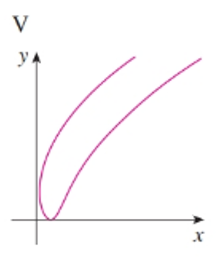
Figure 1
(b)
To find: The correct match for the given parametric equations.
(b)
Answer to Problem 26E
The correct match is I.
Explanation of Solution
Given:
The given equation is,
Calculation:
Consider the given equation,
Eliminate
Then,
The graph for the given equation is shown in Figure 2
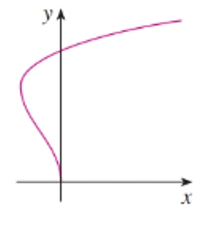
Figure 2
(c)
To find: The correct match for the given parametric equations.
(c)
Answer to Problem 26E
The correct match is II.
Explanation of Solution
Given:
The given equation is,
Calculation:
Consider the given equation,
The graph is the intersection of the sine curves.
The graph for the given equation is shown in Figure 3
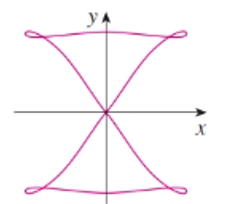
Figure 3
(d)
To find: The correct match for the given parametric equations.
(d)
Answer to Problem 26E
The correct match is VI.
Explanation of Solution
Given:
The given equation is,
Calculation:
Consider the given equation,
The graph is the intersection of the sine curves and the cosine curves.
The graph for the given equation is shown in Figure 4
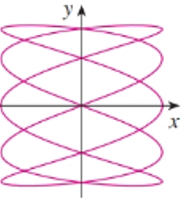
Figure 4
(e)
To find: The correct match for the given parametric equations.
(e)
Answer to Problem 26E
The correct match is IV.
Explanation of Solution
Given:
The given equation is,
Calculation:
Consider the given equation,
The graph is the intersection of the sine curves and the cosine curves.
The graph for the given equation is shown in Figure 5
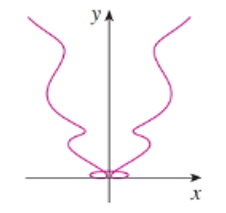
Figure 5
(f)
To find: The correct match for the given parametric equations.
(f)
Answer to Problem 26E
The correct match is III.
Explanation of Solution
Given:
The given equation is,
Calculation:
Consider the given equation,
Then,
This is the equation of the circle.
The graph for the given equation is shown in Figure 6
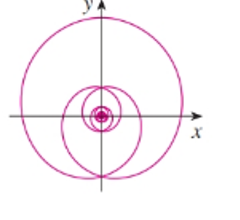
Figure 6
Chapter 1 Solutions
Single Variable Calculus: Concepts and Contexts, Enhanced Edition
- please do Q3arrow_forwardUse the properties of logarithms, given that In(2) = 0.6931 and In(3) = 1.0986, to approximate the logarithm. Use a calculator to confirm your approximations. (Round your answers to four decimal places.) (a) In(0.75) (b) In(24) (c) In(18) 1 (d) In ≈ 2 72arrow_forwardFind the indefinite integral. (Remember the constant of integration.) √tan(8x) tan(8x) sec²(8x) dxarrow_forward
- Find the indefinite integral by making a change of variables. (Remember the constant of integration.) √(x+4) 4)√6-x dxarrow_forwarda -> f(x) = f(x) = [x] show that whether f is continuous function or not(by using theorem) Muslim_mathsarrow_forwardUse Green's Theorem to evaluate F. dr, where F = (√+4y, 2x + √√) and C consists of the arc of the curve y = 4x - x² from (0,0) to (4,0) and the line segment from (4,0) to (0,0).arrow_forward
- Evaluate F. dr where F(x, y, z) = (2yz cos(xyz), 2xzcos(xyz), 2xy cos(xyz)) and C is the line π 1 1 segment starting at the point (8, ' and ending at the point (3, 2 3'6arrow_forwardCan you help me find the result of an integral + a 炉[メをメ +炉なarrow_forward2 a Can you help me find the result of an integral a 아 x² dxarrow_forward
 Calculus: Early TranscendentalsCalculusISBN:9781285741550Author:James StewartPublisher:Cengage Learning
Calculus: Early TranscendentalsCalculusISBN:9781285741550Author:James StewartPublisher:Cengage Learning Thomas' Calculus (14th Edition)CalculusISBN:9780134438986Author:Joel R. Hass, Christopher E. Heil, Maurice D. WeirPublisher:PEARSON
Thomas' Calculus (14th Edition)CalculusISBN:9780134438986Author:Joel R. Hass, Christopher E. Heil, Maurice D. WeirPublisher:PEARSON Calculus: Early Transcendentals (3rd Edition)CalculusISBN:9780134763644Author:William L. Briggs, Lyle Cochran, Bernard Gillett, Eric SchulzPublisher:PEARSON
Calculus: Early Transcendentals (3rd Edition)CalculusISBN:9780134763644Author:William L. Briggs, Lyle Cochran, Bernard Gillett, Eric SchulzPublisher:PEARSON Calculus: Early TranscendentalsCalculusISBN:9781319050740Author:Jon Rogawski, Colin Adams, Robert FranzosaPublisher:W. H. Freeman
Calculus: Early TranscendentalsCalculusISBN:9781319050740Author:Jon Rogawski, Colin Adams, Robert FranzosaPublisher:W. H. Freeman
 Calculus: Early Transcendental FunctionsCalculusISBN:9781337552516Author:Ron Larson, Bruce H. EdwardsPublisher:Cengage Learning
Calculus: Early Transcendental FunctionsCalculusISBN:9781337552516Author:Ron Larson, Bruce H. EdwardsPublisher:Cengage Learning





